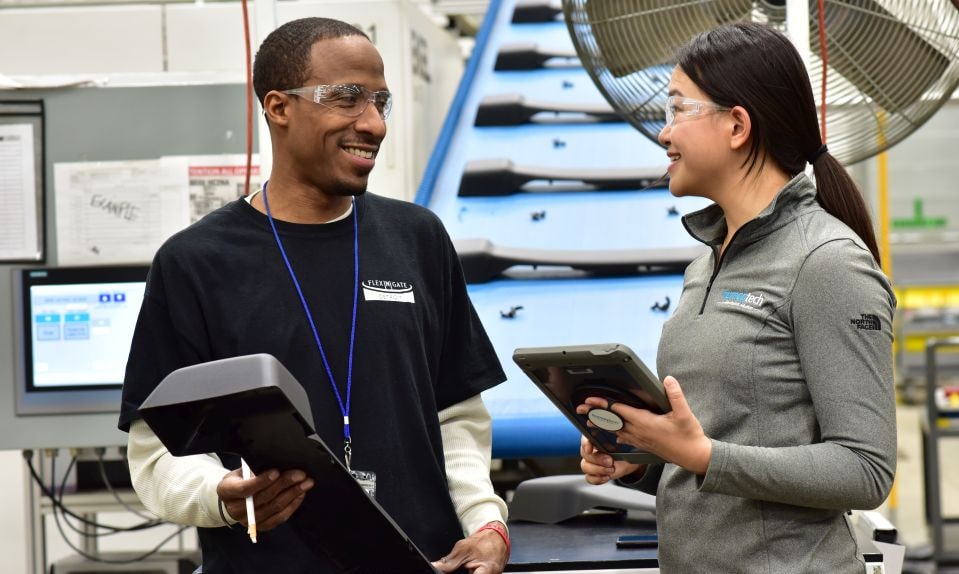Happy New Year! A new year often brings new goals and resolutions. Is one of your goals this year to roll out an office ergonomics process within your company? If so, here are four things that you should consider before launch:
1.Define the scope of your process.
We generally see two approaches to rolling out an ergonomics process: as a triage method and as a proactive intervention. A triage process means that an employee will receive an ergonomics assessment by request or as a result of an injury. A proactive process generally means that every employee will receive an assessment with some predefined frequency.
2.Document the process.
Clients often tell us “We used to have an ergonomics process, but it fizzled out after our old office manager retired.” You don’t want the sustainability of your process to be soley dependent on one person. After all, what happens if that person retires or wins the lottery someday?! Formally documenting the process is one way to ensure success and sustainability. Want to go above and beyond? Consider aligning the process with ISO 45001.
3.Use quantitative risk assessments.
One of the key components of a successful office ergonomics process is a quantifiable risk assessment tool. Being able to quantify risk will enable you to better understand which risk factors an individual employee is exposed to and to prioritize your resources. Another way to think about it is that it will help you distinguish the difference between employee needs and employee wants—because who doesn’t want a state-of-the-art, high-tech, fully adjustable workstation with a 60″ monitor that comes in avocado-green? That doesn’t mean we all need that type of workstation.
4.Maintain an equipment catalogue.
Having an equipment catalogue provides several benefits:
- You can purchase items in bulk, which may result in discounted pricing.
- You can control what “ergonomic” equipment employees are using. (Hint: there is no governing body that certifies something as ergonomic. Many products labeled with this term are, in fact, far from it!)
- You can offer an equipment trial program or demonstration workstation where employees can try several different approved pieces of equipment to determine which is best for them.
Office ergonomics can be a tricky process to successfully create and deploy, but I hope these four considerations help you along the way!
Interested in learning more? You can also check out our free eBook “Five Steps to Improve Ergonomics in the Office”.
